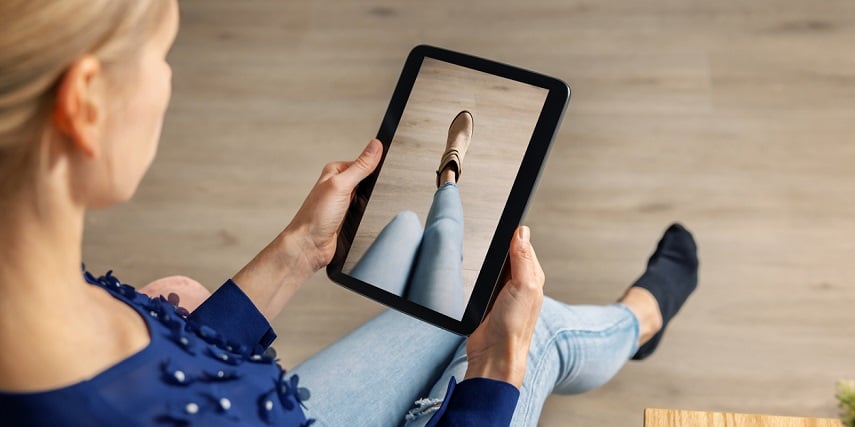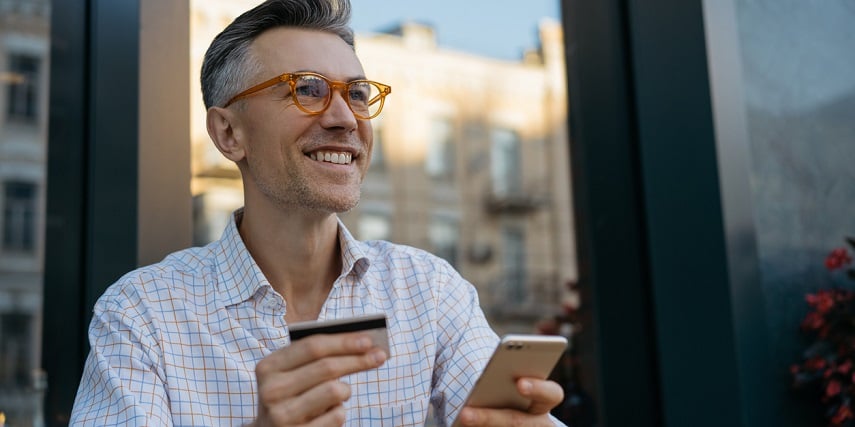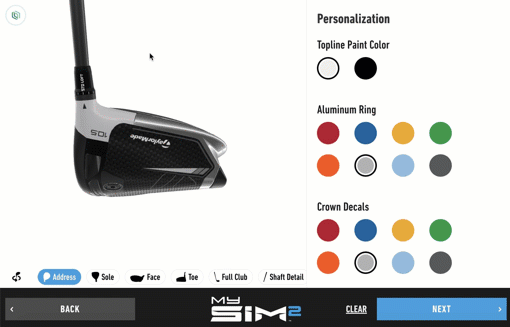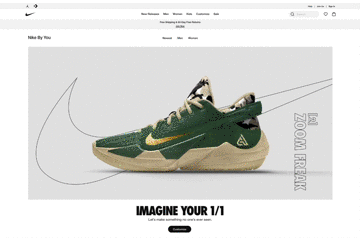The Future Is Here: How AR Virtual Try-On Improves Retail Experiences

Augmented reality (AR) has come a long way from Snapchat filters that make you look like your favorite animal. While AR had a place in stores before the pandemic, 67% of consumers report that they shop differently now than before COVID-19.
Retailers prepared to meet the needs of these consumers will increase offerings of online sales and embrace the technology necessary to offer shoppers an engaging shopping experience.
Today's shoppers seek virtual options to avoid large crowds and for convenience. Retailers can also benefit from a significant overhead reduction.
But a virtual shopping experience that rivals that of a physical store in the retail world requires advanced tools that allow customers to clearly see what they're buying. This is where virtual try-on capabilities enter the picture.
AR works across a variety of devices. Customers can try on everything from necessities like eyeglasses to clothing for a special occasion — or even cosmetics.
How AR-powered virtual try-on works
Augmented reality can be used across a wide range of devices, including smartphones, tablets, wearables, laptops, TVs, virtual mirrors and even AR fitting rooms. When using a handheld device like a smartphone or tablet, AR uses the device's camera and other technology to gather information about the surrounding real world — or, in the case of virtual try-on, a selfie or video.
The software then augments the actual environment by overlaying additional contextual information that represents the product the customer tries on.
The uses of virtual try-on (VTO) for customers can range from customizing Nike sneakers to finding the perfect frames for your face shape when purchasing eyewear. The virtual try-on experience is a win for customers hoping to take advantage of the convenience of online shopping.
3 ways virtual try-on improves the retail experience

Advanced technology that allows consumers to virtually try on everything from eyewear to clothing and shoes provides an engaging experience. It also allows retailers to reach out to new customers with a variety of marketing techniques.
From interactive ads on social media and search pages to brand websites dedicated to customizing original products, retailers can target loyal customers with gift cards or sales that highlight new offerings, limited-time deals or best sellers. Consider these three ways virtual try-on technology can improve the retail experience for customers and boost your online retail sales.
1. Increased sales
Shopping online can help customers save money and time. But shopping for clothing, jewelry, eyewear or even shoes without trying them on can be a hit or miss experience.
The functionality of virtual photography offers 3-D images that show every customization and angle of a product. But images alone can't predict how a product will fit an individual customer.
Shopping for contact lenses online is a simple experience that depends solely on a prescription and type of lenses. But choosing new glasses is generally a much more in-depth process. Popular eyeglass brands like Ray-Ban and Oakley are meeting the needs of customers with virtual try-on apps that allow users to try on and order glasses directly from the website.
A variety of other sites (like Zenni Optical and Warby Parker) employ similar technology. Users can choose from hundreds of frames to use with prescription lenses, blue light glasses or sunglasses.
The process is simple. With a prescription from a doctor and a pupillary distance measurement, customers can:
-
Try on anything from plastic to aviator frames
-
Change to transition lenses
-
Color-swap to see which look is best for their face
With the added confidence of seeing how the glasses look, customers are more likely to convert and be satisfied with the results of their purchase.
2. Engaging customer experiences
Most shoppers have had the unfortunate experience of purchasing something that looks amazing on a model, only to find out it wasn't even close to the perfect shape, color or size for them. This can make online shopping feel like a shot in the dark and a risk not worth taking.
Perhaps that's why 63% of customers said that AR would improve their shopping experience.
Virtual try-on technology enables consumers to see how certain products look on them from the comfort of their own homes. Not only can they interact with the product, but they can also use social media to:
-
Share images
-
Ask for style advice
-
Engage other followers
Instead of viewing static images and examining customer reviews, online shopping becomes an experience that consumers want to spend more time enjoying. This engagement extends to latent customers, as well, when virtual enabled try-on ads are utilized for increased sales.
3. Connecting on social media
Social eCommerce sales are sales where the entirety of the shopping experience, from product discovery to checkout, takes place on a social platform.
The practice allows retailers to reach out to customers where they are. It also allows consumers to share the experience with followers, family and friends.
Social media platforms have recently expanded their in-app shopping offerings to meet the demand.
For example, Instagram introduced AR-powered make-up try-on for brands like Urban Decay and Lancome. Instead of guessing how a highlighter or lipstick shade will match their skin tone from a tiny color swatch, shoppers can virtually try on eyeshadow or switch lip color from shiny to matte on an uploaded photo or video.
There's no question about the popularity of such options. Predictions anticipate the social commerce industry will grow three times faster than traditional eCommerce over the next three years. In fact, experts expect sales to skyrocket from $492 billion in 2021 to $1.2 trillion in 2025.
Offering virtual try-on provides customers with a way to truly engage with products and build confidence in the process. Instead of seeking products that offer free returns or seeking tried-and-true brands, customers have the opportunity to virtually experience a new look.
If you want to create a better visual experience that helps your customers enjoy an engaging interaction and builds confidence in your products, implement AR-enabled virtual try-on technology. Learn more about how AR from Threekit can help you boost your retail sales.




